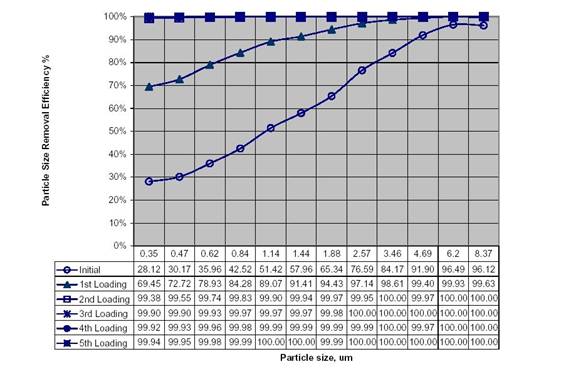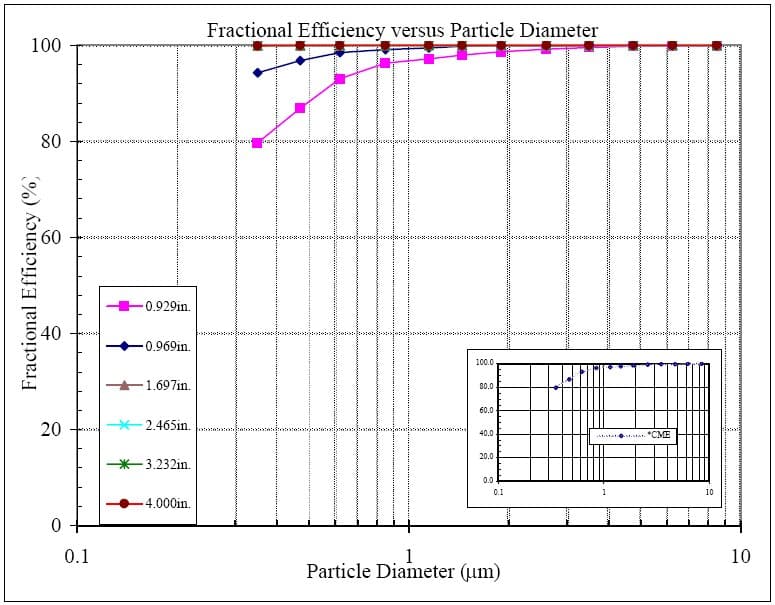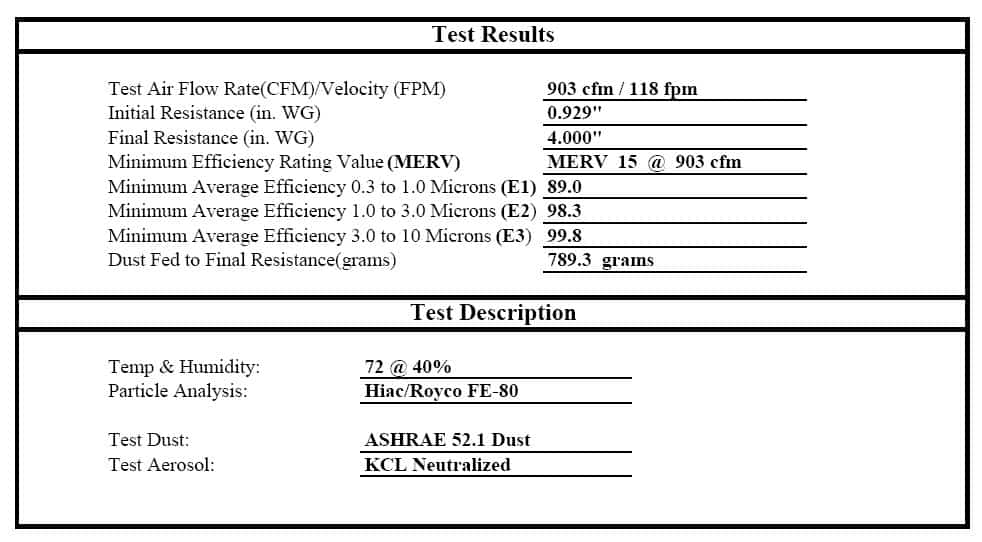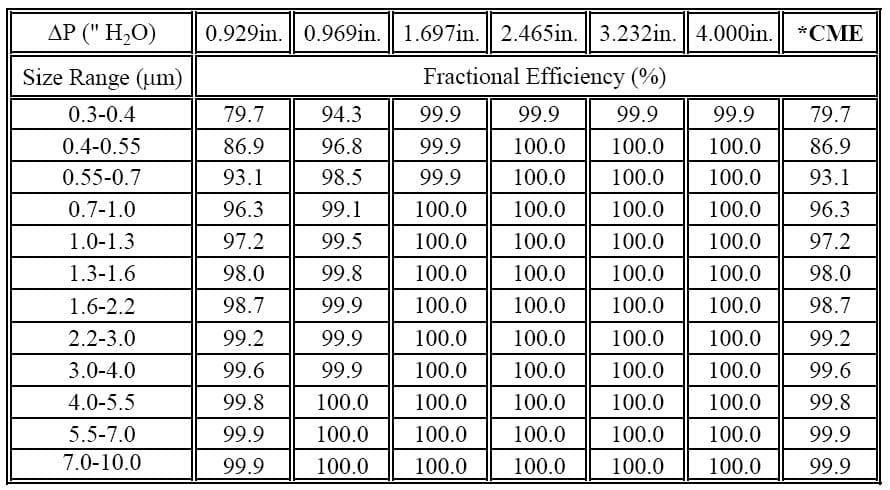Manufacturers of filters, dust collection systems, and air filtration equipment use different test methods based on their intended target market. Over the years we have seen all sorts of test results, for many different filters, using many different standards. These standards include ASHRAE 52-76 and 52.1 (aka Dust Spot), ASHRAE 52.2 (aka MERV), BIA, DOP, KCl, IEST, EN 1822, MIL 282, and the ever-popular “300 hour Atomite” test. This can be confusing to an end user, and justifiably so. Most guys just want to know “which filter is the best”. Unfortunately, it’s not that simple…not usually.
As a filter supplier we are often forced to choose between one test standard and another. Testing is expensive, and it’s not practical to test each filter design to multiple standards. Most manufacturers choose the standard that makes the most sense for them, and for their customers. Sometimes it’s as simple as geography….a European supplier will normally use a European standard like BIA or EN 1822. Here in the US we normally use MERV, MIL 282, or the “300 hour” test.
In addition to choosing a test standard, the manufacturer must also decide which filters to test. Wynn Environmental has (63) different cartridge configurations, and (4) popular filter medias…running each and every design would require us to test (252) different filters! This is simply not practical. Most suppliers will select a single representative/common filter size to test, to demonstrate the capability of their filter line. The assumption is that similar filters made from the same filter media will perform equally well.
Sometimes a manufacturer will simply test the filter media itself, in a flat sheet, rather than test an actual completed filter assembly. This type of test is almost always performed by the filter media manufacturer (the mill), and not the filter fabricator. When reviewing this type of data just keep in mind that filter media must eventually undergo a pleating process which stretches and folds the media, causing cracks and voids in the various layers of filter media and substrate. So, while a flat sheet test is valuable for comparing certain media properties, it does not provide valid efficiency data that can be duplicated in the field. Actual field efficiency is always lower than flat sheet efficiency.
Occasionally we come across “hybrid” data, or data from a modified test. This category would include any test that does not conform to the recognized test standard. An example of this would be a test that was run at the wrong velocity, pressure drop, or particle size. Any test data falling into this category should be met with skepticism.
So, just remember, the manufacturers are trying to sell product, and they are likely to select a standard that gives them some sort of marketing advantage. Most of them are using a legitimate test standard, with legitimate data…but not all. When you see fancy test results and wild claims be sure you get the whole story.
Here’s a rundown of the test standard that we use for our pleated cartridge filters:
ASHRAE 52.2:
As you can see, these filters test very well, but the results do not indicate the 99.99% at 0.5 micron rating that we have given to our 80/20 blend. Why? Well, this is because the ASHRAE 52.2 test standard is not designed for round pleated cartridge filters. More importantly, it is not designed for cleanable filters. ASHRAE 52.2 was actually designed to test flat disposable HVAC filters, so the resulting data needs to be taken with a grain of salt. Yes, this filter will achieve 99.99% at 0.5 microns, but not right out of the box. It takes a couple of hours or days for the efficiency to peak and level off, where it will remain for the next 2000-3000 hours. So the ASHRAE 52.2 test does not give a true indication of what a user should expect to see from their dust collection filter…it can only tell you what the filter will do when it is brand new.
The first table on the right is a MERV 11 80/20 Blend Filter. The chart and tables below that are the same ASHRAE 52.2 test, except they include test data from one of our MERV 15 NANO filters. Note the huge increase in submicron efficiency on the initial loading (column 1). The 4th item down 96.3% at 0.7-1.0 microns corresponds to the 42.52% at 0.84 (mean) microns from the last table. Also note that both filters approach or exceed 99.99% by the 5th loading. To put this into perspective, with this size filter (250 sq. ft.), the 5th loading peaks at about 1.75 lbs of dust.
Background info and further explanation:
-ASHRAE 52.2 requires a minimum face velocity of 118 fpm. This equates to over 1100 cfm on our Farr style filters! In practice we never push these filters past about 750 cfm, and normally run them at about 500 cfm, so the 52.2 test pushes them way beyond their intended flow rating. ASHRAE 52.2 gives all cartridge filters (not just ours) an unfairly low indication of the true as-installed efficiency. When reviewing MERV data, just be sure to check the the test velocity. Again, it must be a minimum of 118 fpm. We have seen “MERV” efficiency claims from one manufacturer that came from tests using a much lower velocity.
-ASHRAE 52.2 does not allow the filters to be loaded then cleaned. It simply injects dust until the desired pressure is achieved, then plots the efficiency at that pressure. The “Loadings” are data points taken at 30 grams, 25%, 50%, 75%, and 100% of full pressure, they are not “loadings and cleanings” as has been suggested elsewhere. As a result, the efficiency numbers are representative of a brand new filter, before its first cleaning. This is only marginally useful to the person designing a dust collector. His filter will only be “new” for an hour or two, so what happens after that? ASHRAE 52.2 does not tell you.
-The 52.2 standard allows an “apples-to-apples” test between suppliers, which is good, but it does not give a true indication of what the filter will do in actual use. If you need data for an “apples-to-apples” comparison between manufacturers, use the above charts. If you need efficiency for other calculations, such as EPA emissions, use our published 99.99% figure.
-When comparing MERV test results pay close attention to the reported pressure drop. All of our filters are tested to a final pressure drop of 4.0″ wg. This is where they display their peak efficiencies of 99.99%+. This is not, however, the pressure drop or efficiency that is used when we report the MERV values. By definition, MERV values must be the minimum reported value…this nearly always occurs after the initial loading, which is typically under 1.0″ wg. All Wynn filters come with MERV values reported as the minimum efficiency.
We hope this information proves useful, and please do not hesitate to call the office if there are any questions. If you are looking for a cartridge filter with a higher efficiency than the 80/20 Blend or NANO filter can provide, please give us a call. We build MERV 16 TetraTex membrane filters on a special order basis. We also have a warehouse full of HEPA filters in stock, right here in Warwick, PA!
We have been in this business for a long, long time. Our goal is the same as it has always been…to give every customer the very best product at the very best price. We truly appreciate your business.




